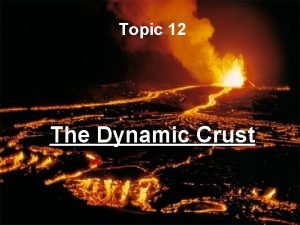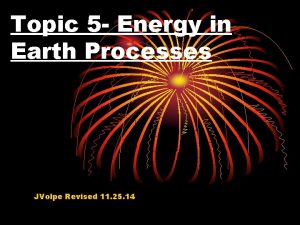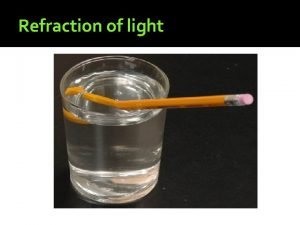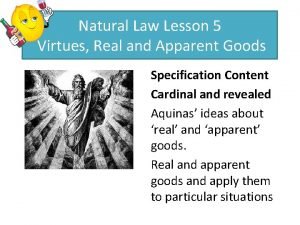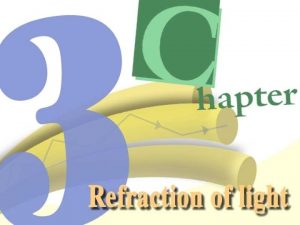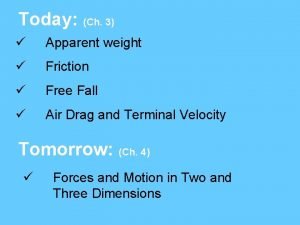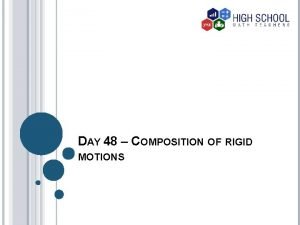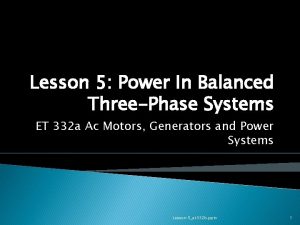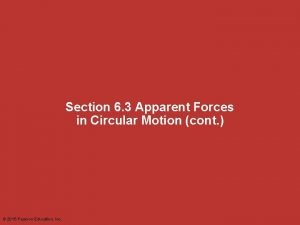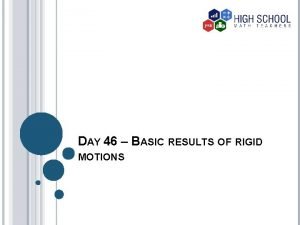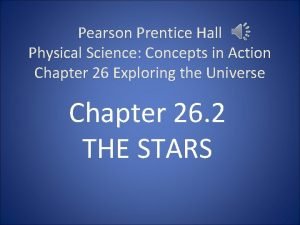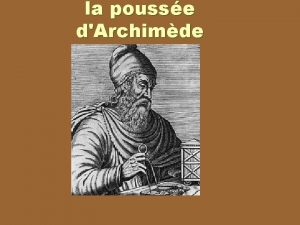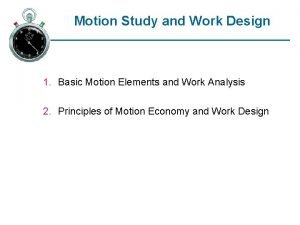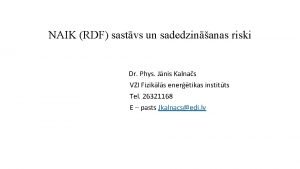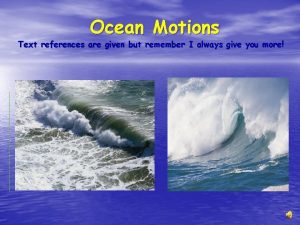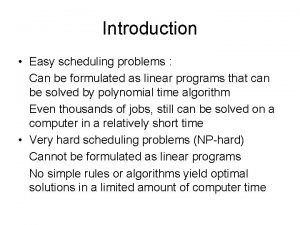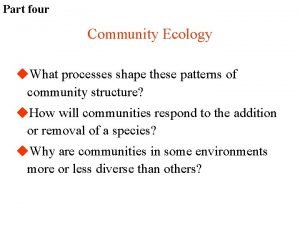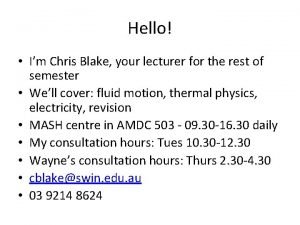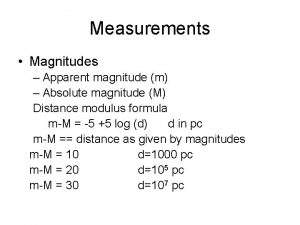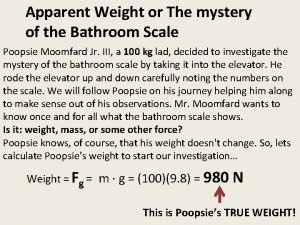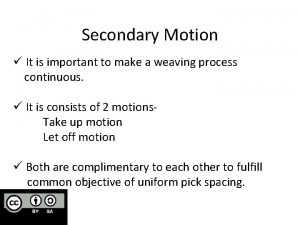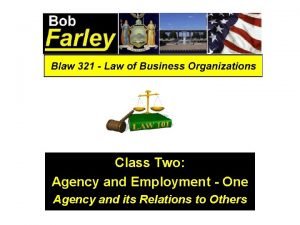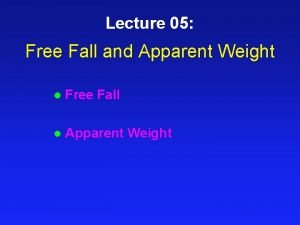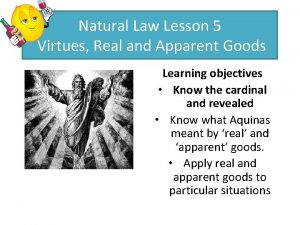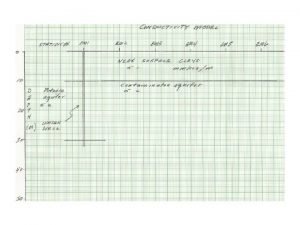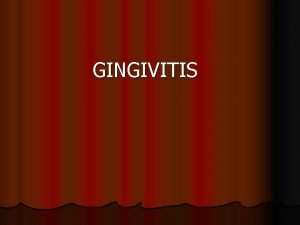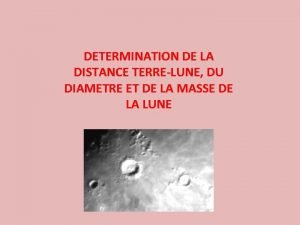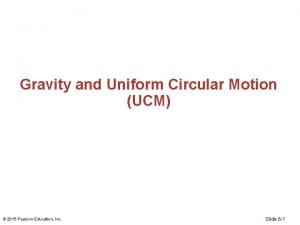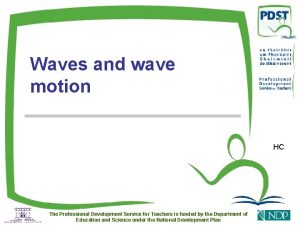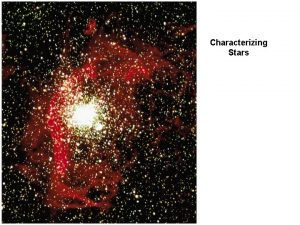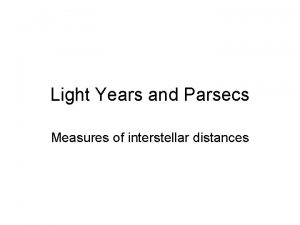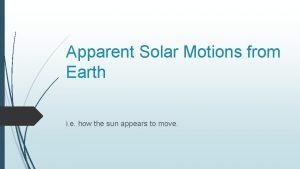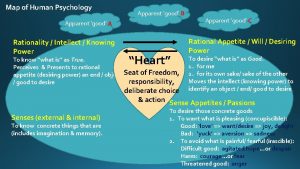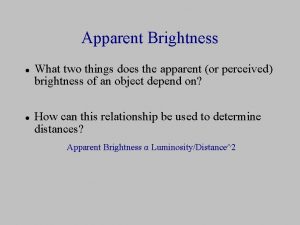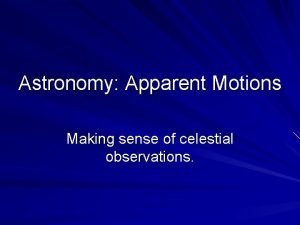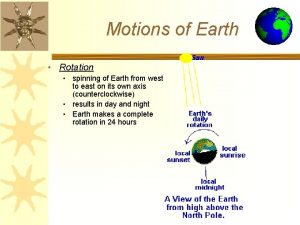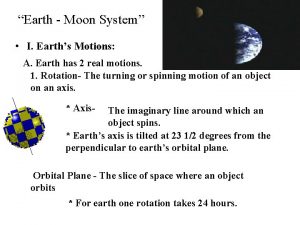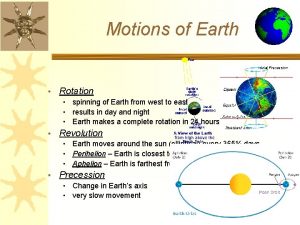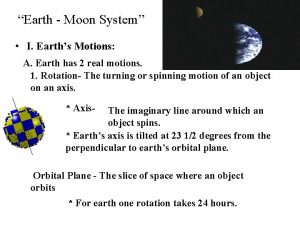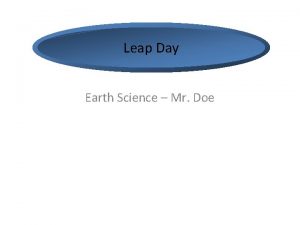TOPIC 3 EARTH MOTIONS TRUE MOTIONS APPARENT MOTIONS



























































- Slides: 59

TOPIC 3 EARTH MOTIONS

TRUE MOTIONS APPARENT MOTIONS “Real Motions” “What appears to move” Rotation Revolution Sun Stars Moon Planets

ROTATION: • The spinning of Earth on its axis. • Earth rotates from West to East (counterclockwise when viewed from the North Pole). • 24 hours (15 o/hour) Drawing *!* The Earths axis is tilted 23. 5 o relative to the sun.

REVOLUTION: • The orbiting of Earth around the sun. • 365. 26 days (1 o /day) Drawing

APPARENT MOTION OF THE STARS Daily Motions Annual Motion • Stars appear to move • Some constellation in circular paths are seasonal while around Polaris at a others can be seen rate of 15 o/hour. year round. • Eastward to westward. • Circumpolar vs. noncircumpolar. • Due to rotation. • Due to revolution. Ex:







Apparent Motion of the Sun • The Sun appears to move from east to west at a rate of 15 o/hour. • The path of the sun changes with the seasons and with latitude. • Local solar noon- occurs when the sun reaches its highest point in the sky. • Only between 23. 5 N and 23. 5 S will the sun ever be directly overhead! (the tropics) • The sun is NEVER overhead for an observer in the continental U. S. • See sun’s path diagram





True Motions of the Moon • The Moon revolves around Earth and rotates on its axis once every 27 1/3 days. The revolution of the Moon is responsible for…. . 1. The phases of the Moon. 2. Tides 3. Eclipses

MOON PHASES • The varying amounts of the lighted moon as seen from Earth. • The period from one full moon to the next is 29 ½ days. • http: //www. astro. wisc. edu/~dolan/java/Mo on. Phase. html







TIDES • The cyclic rise and fall of ocean waters due to the gravitation between the Earth, moon and sun.





SPRING vs. NEAP TIDES SPRING TIDES Ø Higher high tides, lower low tides.

NEAP TIDES: Ø Lower high tides higher low tides.






ECLIPSES: LUNAR SOLAR











MODELS OF THE UNIVERSE • • GEOCENTRIC Ptolemy “Earth Centered” Drawing: • • HELIOCENTRIC Copernicus “Sun Centered” Drawing:


Best Evidence of the Earths Rotation… 1. Foucault Pendulum 2. Coriolis Effect- the apparent deflection of the path of a moving object due to the rotation of Earth. • • N. Hemisphere – to the right S. Hemisphere - to the left

ORBITAL GEOMETRY Keplers 1 st Law § Planets orbit the sun in slightly eccentric elliptical paths with the sun at one of the foci.

Johannes Kepler

• http--home. cvc. org-science-kepler. gif

http: //home. cvc. org/science/kepler. gif http--home. cvc. org-science-kepler. gif http: //home. cvc. org/science/kepler. gif

Eccentricity: • “ out of roundness” • Formula: eccentricity = distance between foci length of major axis • All eccentricity values must be between 0 and 1 (decimal)!


Kepler’s 2 nd Law • A line drawn from a planet to the sun will sweep across equal areas in an equal amount of time. What does this tell us? • The closer a planet is to the sun, the greater its orbital velocity (speed).

Kepler’s 3 rd Law • The period of a planet squared is equal to its distance from the sun cubed. (P 2=D 3) What does this tell us? • Planets that are further away from the sun take longer to revolve.

Perihelion • The point in a planets orbit when it is closest to the Sun. • Around Jan 4 th Aphelion • The point in a planets orbit when it is furthest from the Sun. • Around July 4 th
 True motions
True motions Narrowed down topic examples
Narrowed down topic examples Unity and coherence
Unity and coherence Amer rasheed
Amer rasheed Chapter 2 jesus christ true god and true man
Chapter 2 jesus christ true god and true man Topic 12 earth's dynamic crust and interior
Topic 12 earth's dynamic crust and interior Energy in earth processes topic 5
Energy in earth processes topic 5 What is the true shape of earth
What is the true shape of earth Cause of refraction of light
Cause of refraction of light Archimedes displacement
Archimedes displacement Formula for apparent weight
Formula for apparent weight Apparent goods
Apparent goods Apparent volume of distribution
Apparent volume of distribution Apparent density
Apparent density Total internal reflection in a semicircular glass block
Total internal reflection in a semicircular glass block Apparent weight
Apparent weight Composition of rigid motions example
Composition of rigid motions example In a triangle connected source feeding
In a triangle connected source feeding Histogram polygon graph
Histogram polygon graph 3 phase power formula
3 phase power formula Linear pharmacokinetics
Linear pharmacokinetics Physics textbook
Physics textbook Basic rigid motions
Basic rigid motions Absolute brightness def
Absolute brightness def Example of apparent competition
Example of apparent competition Poussee archimede
Poussee archimede Principles of motion study
Principles of motion study Kalnačs
Kalnačs Apparent position
Apparent position Ocean motions
Ocean motions Contour of gingiva in gingivitis
Contour of gingiva in gingivitis Fundamental niche vs realized niche
Fundamental niche vs realized niche Active passivity vs apparent competence
Active passivity vs apparent competence Power triangle
Power triangle Classical vs operant
Classical vs operant Specific gravity formula for fine aggregate
Specific gravity formula for fine aggregate Apparent tardiness cost
Apparent tardiness cost Apparent bulk density
Apparent bulk density Ecologyu
Ecologyu Song leading hand motions
Song leading hand motions Apparent weight formula
Apparent weight formula Wediag
Wediag E 0
E 0 Bioavailability def
Bioavailability def Apparent
Apparent Flow of debate mun
Flow of debate mun Secondary motions of weaving
Secondary motions of weaving One two agency
One two agency Apparent weight
Apparent weight Virtues list
Virtues list Resistivity unit
Resistivity unit Size separation in pharmacy
Size separation in pharmacy Actual and apparent position of gingiva
Actual and apparent position of gingiva 75 kg man
75 kg man Période de révolution
Période de révolution Normal force in uniform circular motion
Normal force in uniform circular motion Apparent frequency formula
Apparent frequency formula Apparent magnitude
Apparent magnitude What is a parsec?
What is a parsec? Metaphase describe
Metaphase describe





